Circuit Characteristics and Challenges
-
Track Length and Laps: Spa-Francorchamps is the longest circuit on the Formula 1 calendar, measuring 7.004km, and features 44 laps in the Grand Prix, the lowest lap count compared to other races
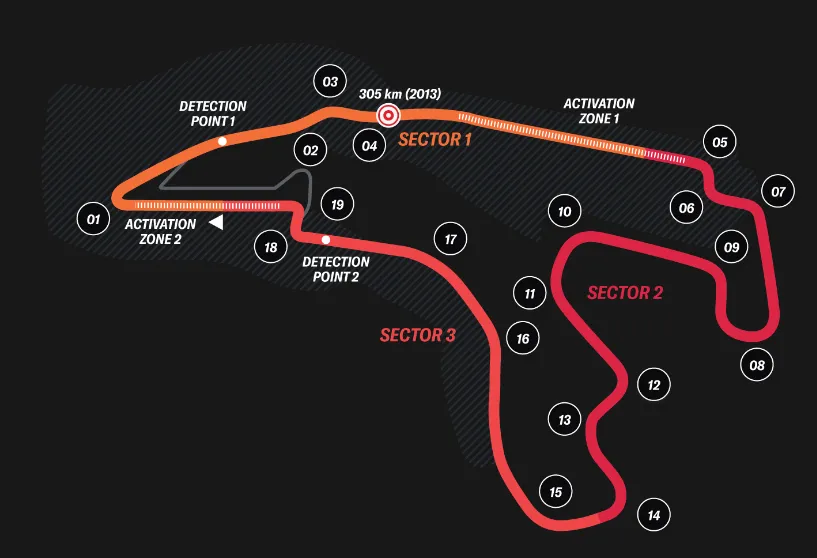
-
Fuel Consumption: Despite having several long, flat-out sections, Spa ranks in the middle when it comes to fuel consumption. Tracks with constant stop/start sections, such as Hungary and Monaco, have higher fuel consumption
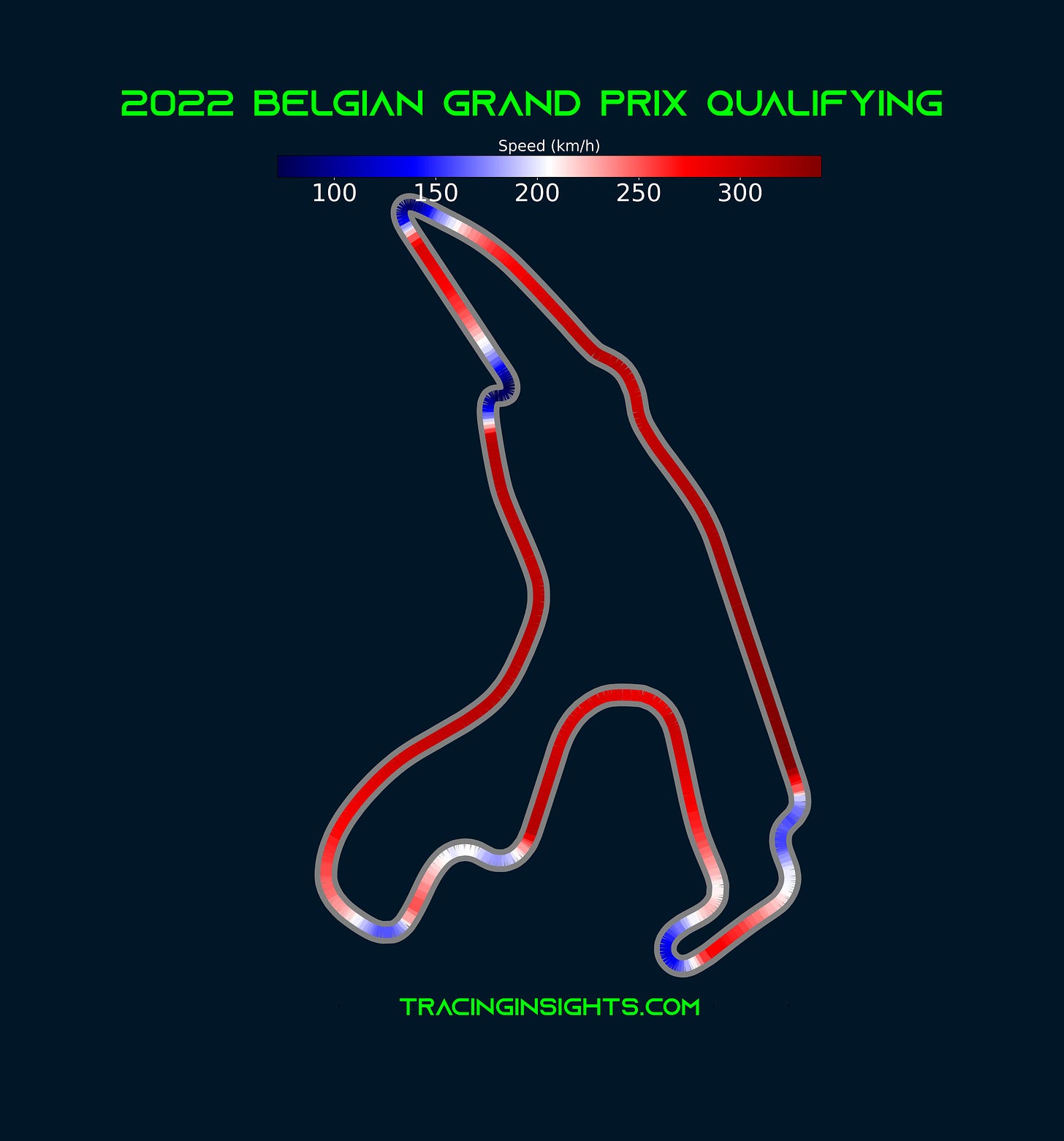
-
Tyre Duty and Wear: Spa presents one of the greatest challenges for tyre wear in the season, with high average wear across all four corners of the car.
- Unique Challenges: The long lap distance poses unique challenges. If a car sustains damage early in the lap, it loses more time getting back to the pits. Additionally, Spa's changeable weather means varying conditions from corner to corner, adding complexity to race strategies. That will be of particular interest this weekend with the Sprint format and parc fermé conditions after FP1.
-
Race Start: The distance from pole position to the braking zone to the first corner at La Source is just over 150 metres so there is limited opportunity to gain positions immediately off the line.
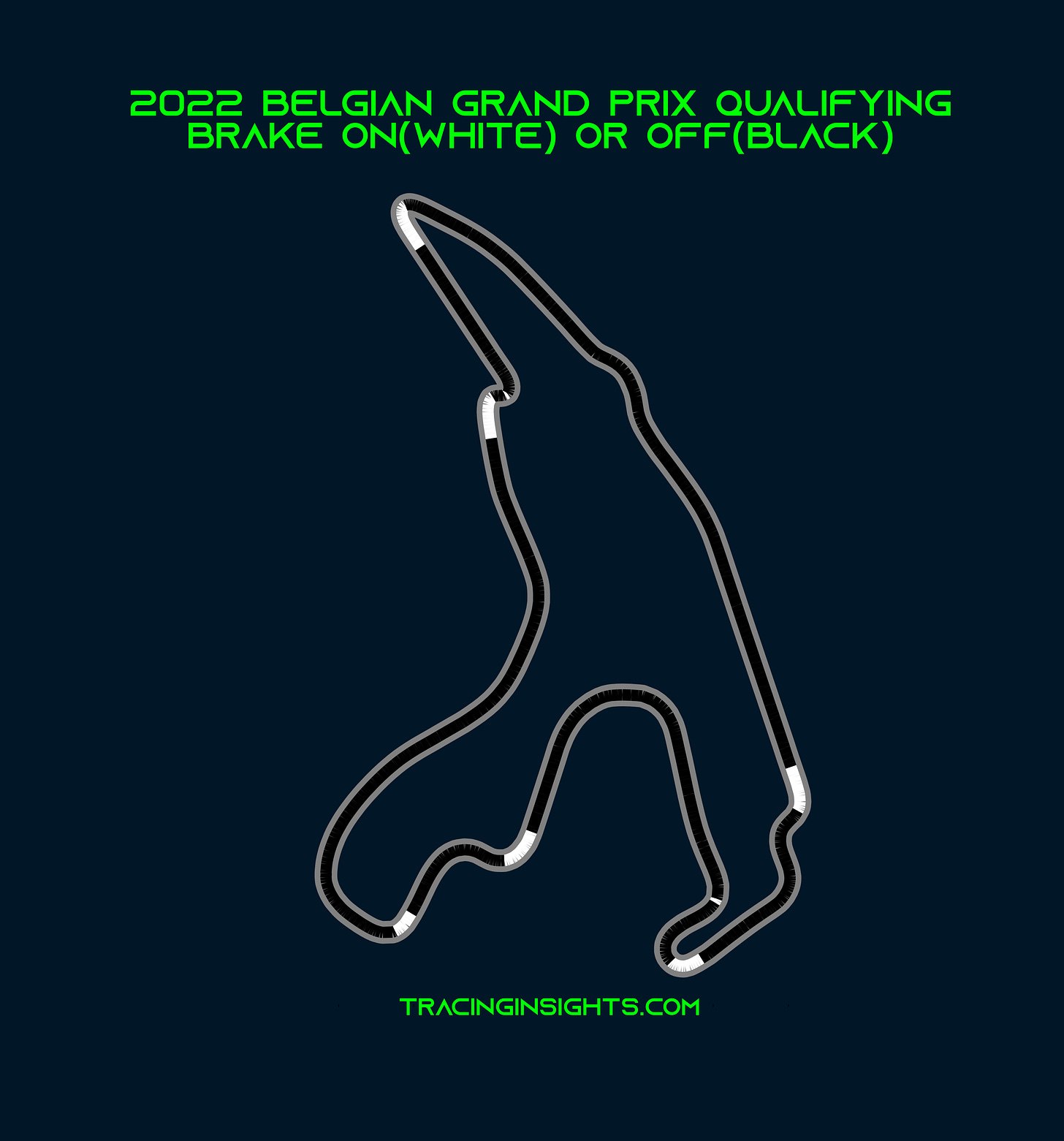
-
High-Speed Sections: Around 80% of the lap distance at Spa is taken at full throttle, making it one of the highest percentages of any F1 track on the calendar. The section from the exit of La Source to the braking zone for Les Combes spans over 20 seconds of full-throttle driving. Because of this flat-out section, the exit of La Source is incredibly important, as it leads down the long straight to Eau Rouge and Raidillon.
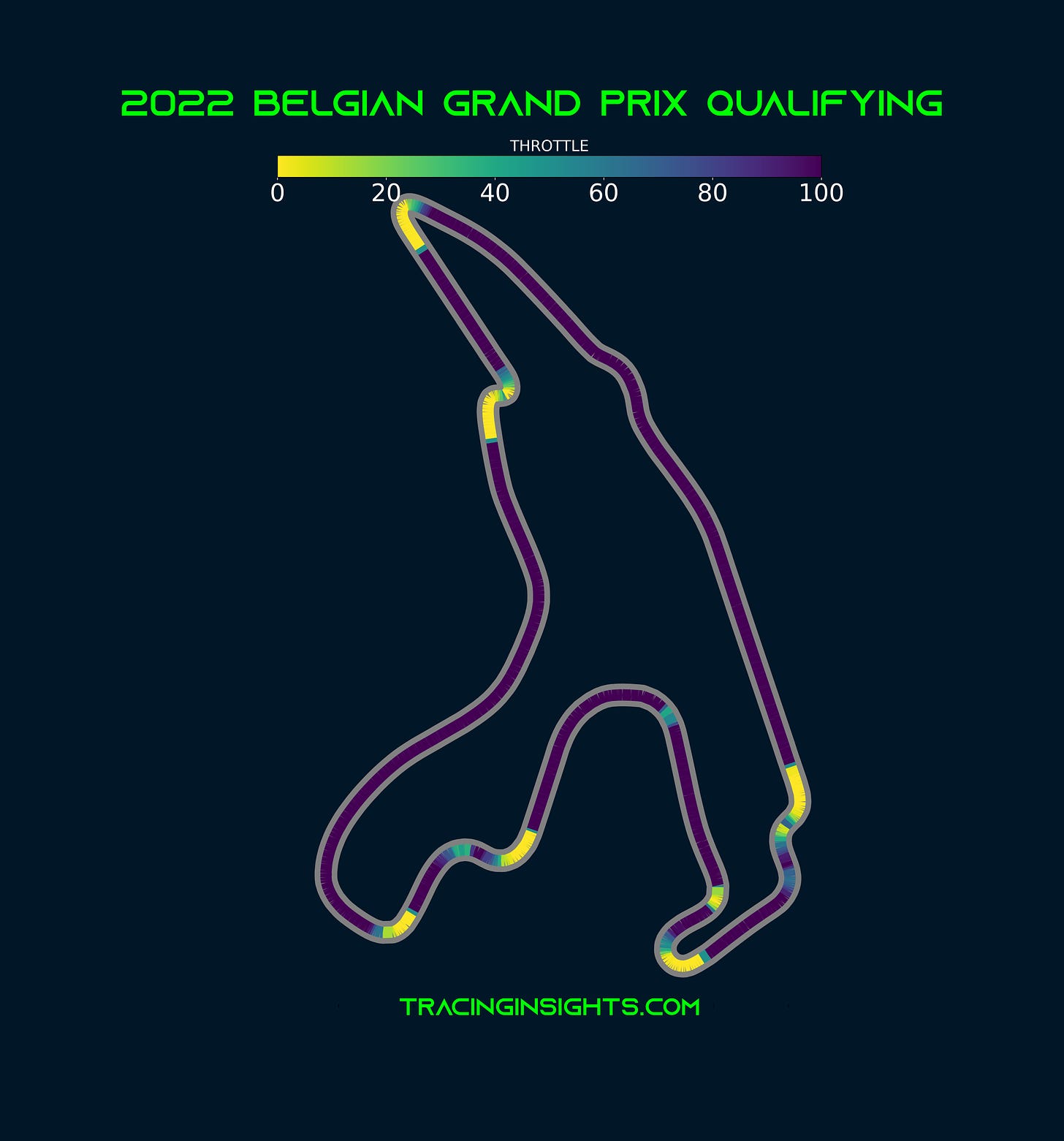
-
Elevation Changes: Spa features the highest elevation change of the season, with a difference of around 100 meters between its highest (Les Combes, Turn 7) and lowest point (Stavelot, Turn 15).
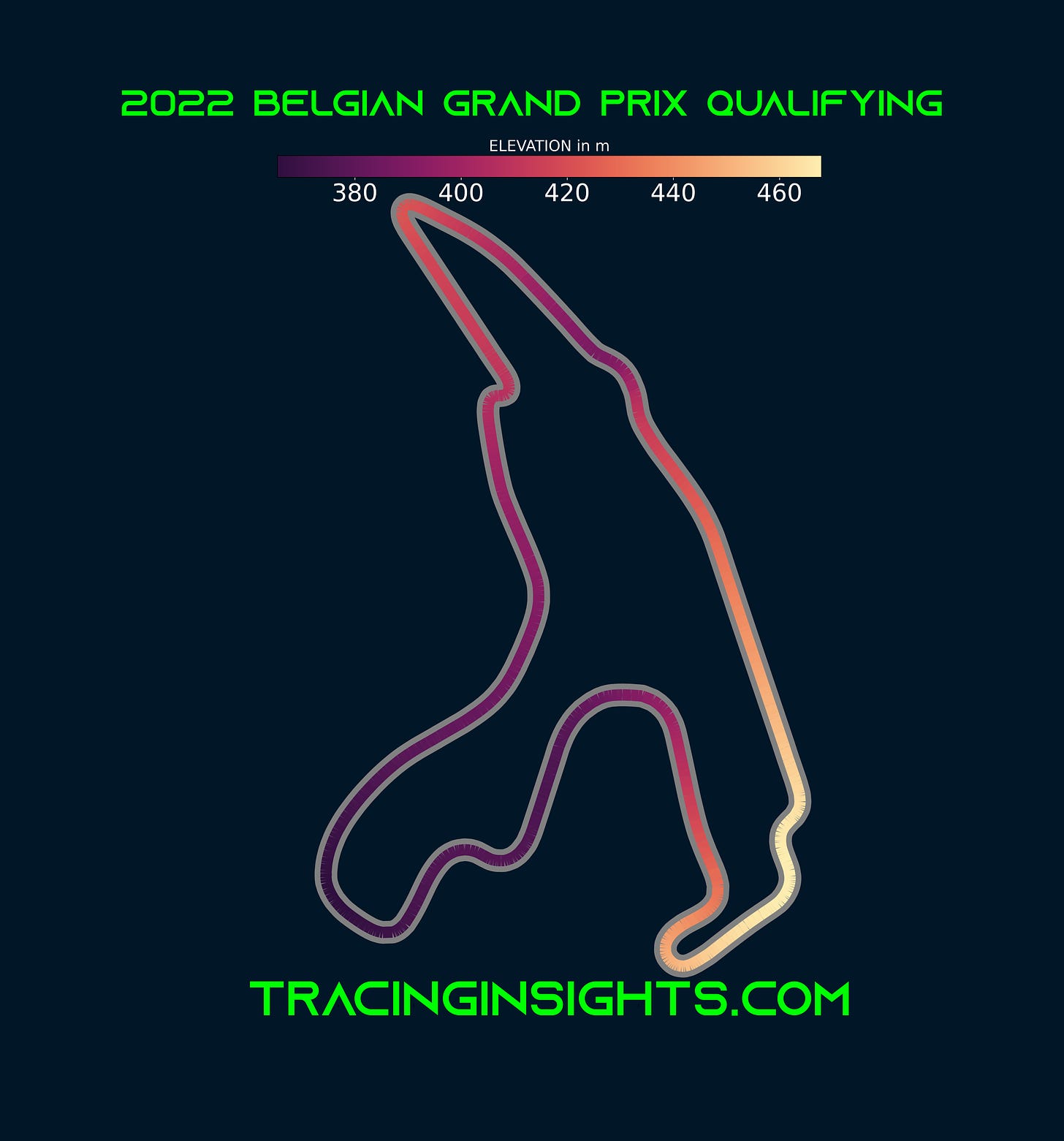
-
Heavy Compression Forces: The drivers and cars typically experience a heavy compression of forces through the downhill entry of Eau Rouge and the uphill exit of Raidillon: consisting of a high speed left-hand turn, where the downforce squashes the car into the ground, followed by another high-speed right-left kink where the car goes light at the top of the hill onto the Kemmel straight.They are travelling at pretty much Vmax (maximum velocity of the car), almost as fast as the car can go before heading through this section. This means there is 3g of vertical compression. Some resurfacing and reshaping has taken place through this section, which may well have eliminated one of the biggest bumps and softened the compression forces slightly.

-
Tow and Overtaking: The long straights at Spa create powerful tow opportunities, especially after Raidillon. On the first lap this is even more powerful, because drivers chasing can pick up a tow from multiple cars. The lack of DRS on lap one also increases this effect. Overtaking difficulty is average at Spa. The Bus Stop chicane and the DRS zone to Turn Five are the favored overtaking spots.
-
Car set-up: The first and third sectors at Spa feature long straights and flat-out sections, but the second sector is twisty. This makes it challenging to find the right balance and set-up compromise, particularly with the wing level. A bigger wing will gain time in the middle sector but leave you vulnerable on the straights, while a smaller wing will provide less drag for the flat-out sections but not providing the same level of grip in the twisty corners. This is a similar predicament to Baku.
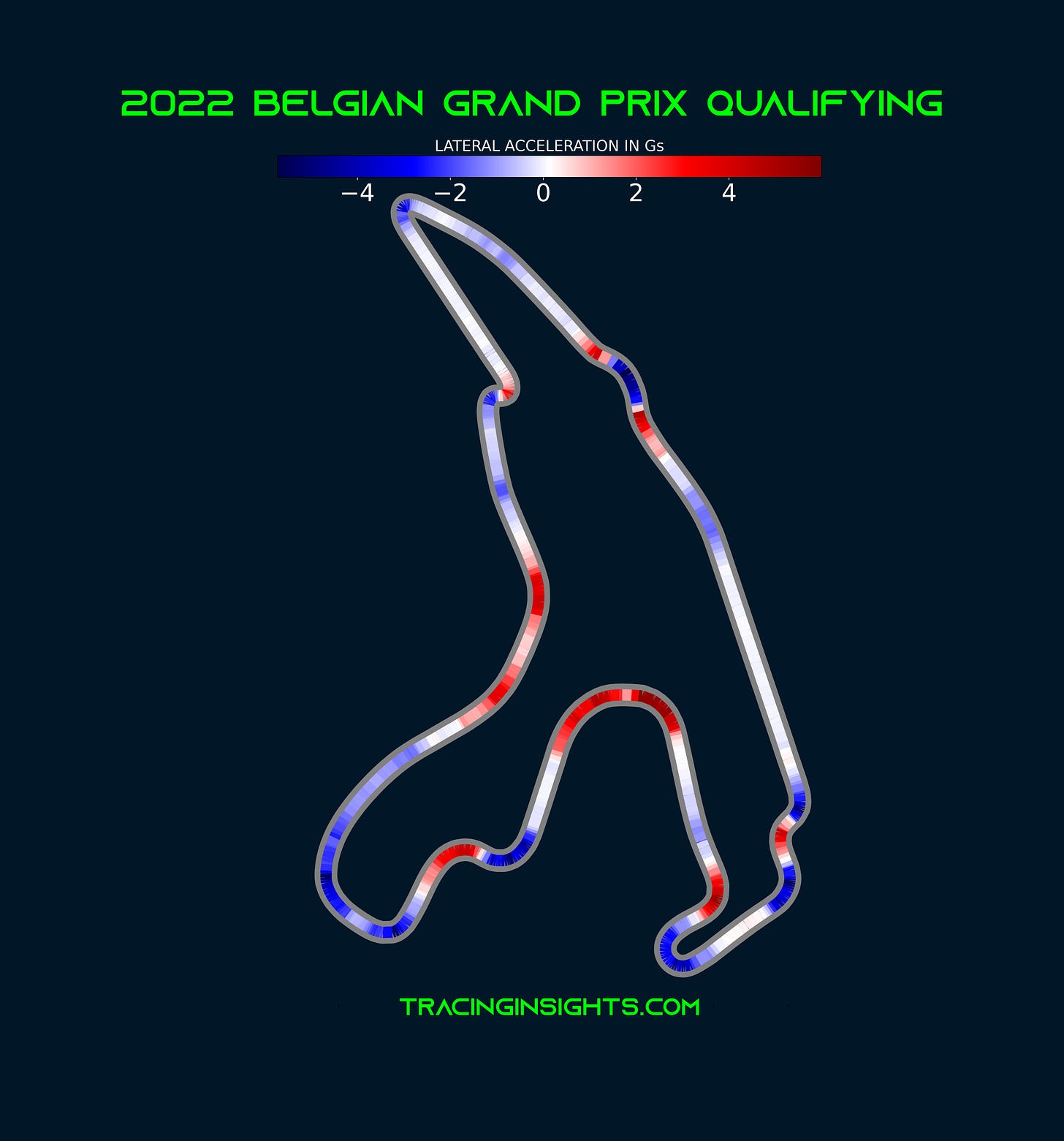
Tyre Selection and Characteristics
-
Tyre Compounds: The 2023 Belgian Grand Prix will see the teams equipped with the C2 as P Zero White hard, C3 as P Zero Yellow medium, and C4 as P Zero Red soft compounds.
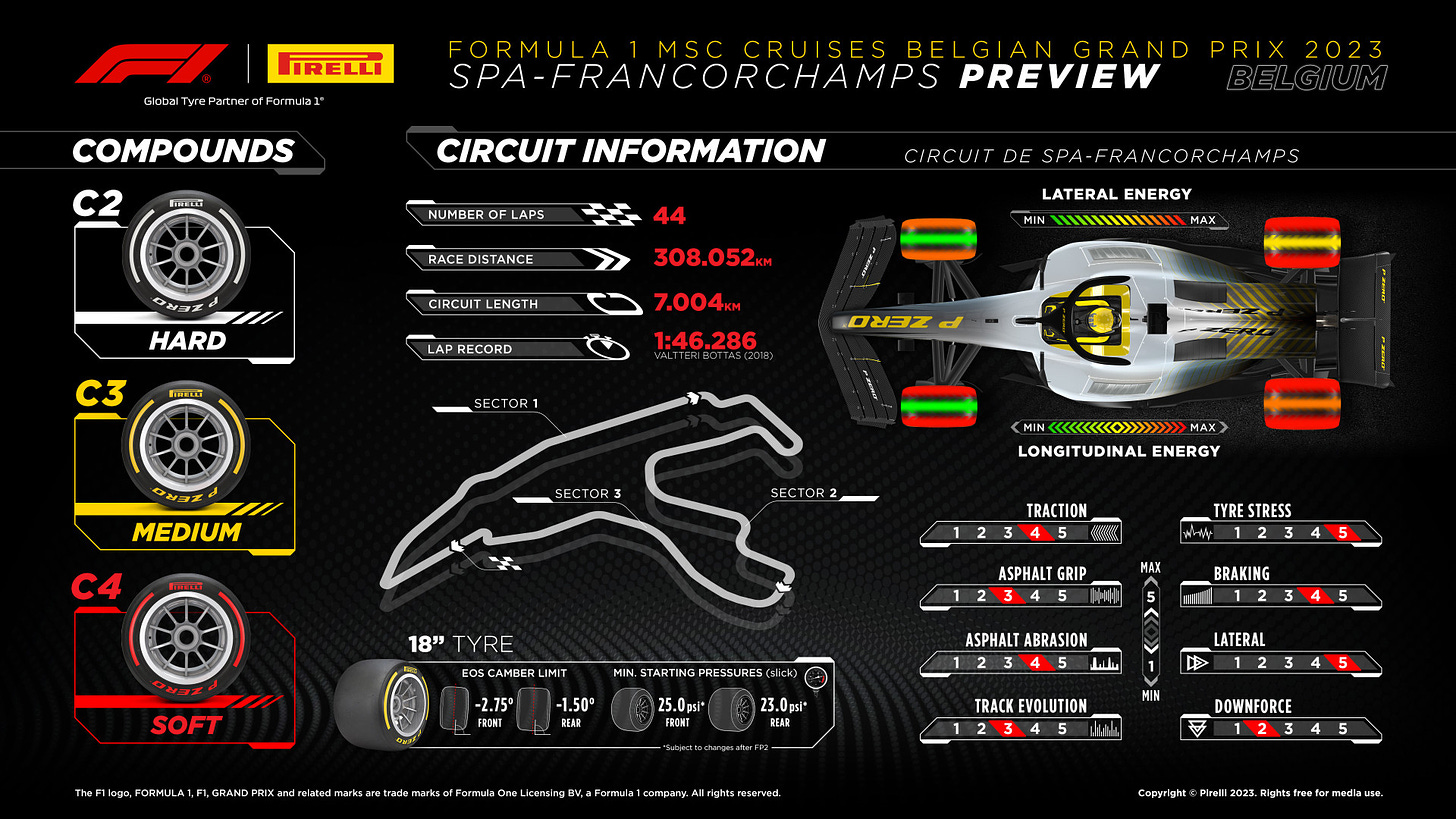
-
Forces on Tyres: Spa subjects the tyres to considerable forces, especially during the compression at Eau Rouge and the climb up to Raidillon. The high-speed corners test the tyres' performance and durability
- Previous Strategies: In the 2022 Belgian Grand Prix, most teams opted for a two-stop strategy using all three tyre compounds.
Weather and Strategy Considerations
- Rain as a Threat: Spa's unique geography makes rain an ever-present threat, with parts of the circuit varying between dry and soaking conditions. Choosing the correct tyre at the right time can see a driver vault up the order on intermediates or wets while others tiptoe around on slicks for three minutes. The forecasts suggest we're in for a slippery time with rain and showers around every day this week.
- Safety car probability: Safety Cars are to be expected at Spa. All but two races have seen a Safety Car deployment since 2014 but there have only been two Virtual Safety Car deployments since 2015, when the system was introduced.
- Strategic Importance of Tyre Choice: The long lap times at Spa, especially in wet conditions, can lead to significant advantages or disadvantages based on the correct tyre choice.
Key Statistics
- Average Pit Stop Time: The average time lost when pitting at Spa is below average at 19 seconds due to the pit exit being after the Bus Stop chicane, skipping Turn One (La Source).
- Front Row Advantage: Approximately 63% of wins at Spa-Francorchamps have been taken from the front row. No one has ever won the race from fourth on the grid.
-
Margin of Victory: The average margin of victory at Spa from 2014 to the present is 6.9 seconds, which is lower than the Hungaroring, despite Spa's longer 7km length.
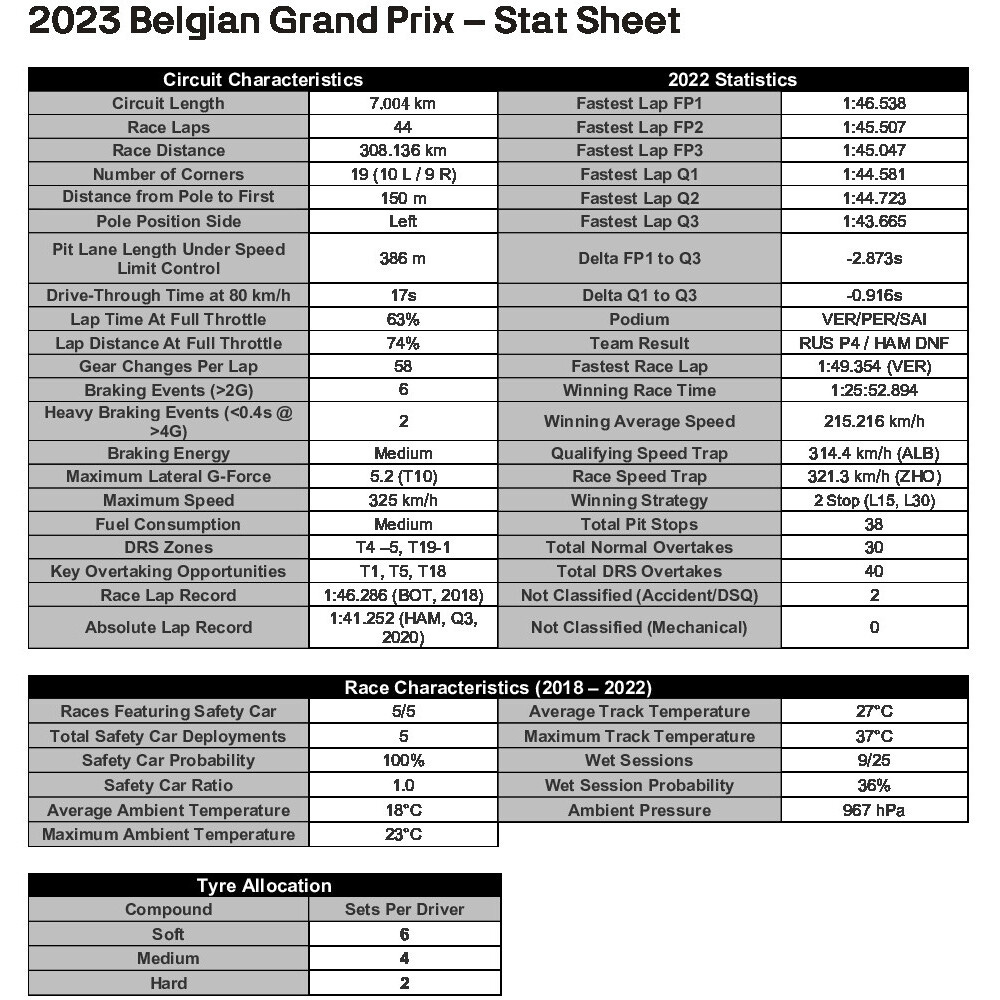
Follow me on Twitter, Mastodon, Instagram, Sub-Reddit, Threads for more analysis